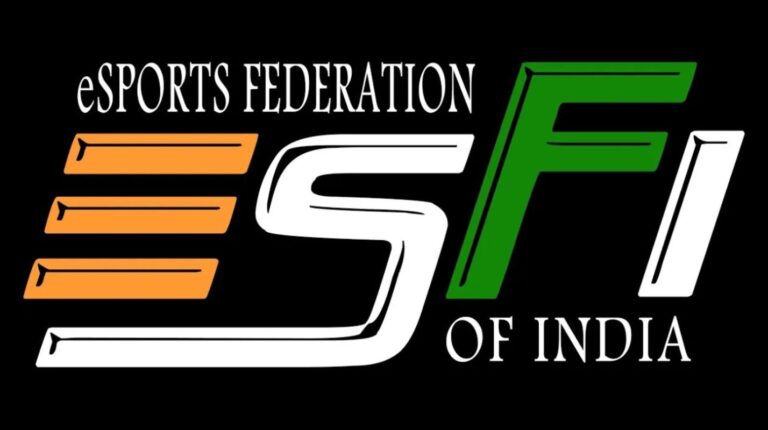Krafton Ramps Up India Investment As Money Games Are Banned And Esport Supported


- Krafton commits at least $50 million annually to the Indian gaming market
- India passes a new law banning online money games while supporting esports
- Local money game operators cut jobs while non money gaming sees new opportunities
- Krafton’s plan aligns with the shift toward regulated esports and casual gaming
Jump to:
Krafton Expands Its India Strategy
Krafton, publisher of Battlegrounds Mobile India, is preparing to spend at least $50 million annually in the Indian market. The commitment includes funding local studios, building publishing capacity, and supporting acquisitions. The company has positioned India among its priority markets, driven by a large mobile player base and potential esports growth.
India is among Krafton’s top five markets and made up about 10% of the company’s soaring sales of $1.1 billion during the first six months of 2025 – mostly due to the popularity of Battlegrounds Mobile India, a battle royal survival shooter set on a remote island, which was released in 2021.
“India is currently home to over 450 million gamers, with mobile gaming leading the charge. Esports viewership has skyrocketed by 400% over the last three years, and the ecosystem is projected to cross ₹1,100 crore ($11 billion) in revenues by 2025,” Krafton said in a statement in July this year.
“The time is now, and the future belongs to those who invest early in this cultural and digital revolution.”
The timing of this investment is central. India has just passed a new gaming law that sets strict boundaries for online money games while carving out safe space for esports and entertainment gaming. Krafton’s multi-year commitment lands in a market that is being reshaped at a structural level.
The strategy is significant because it follows earlier investments in Indian developers and technology startups. Krafton previously backed Nodwin Gaming, Loco, and several content platforms, signaling an interest in strengthening an ecosystem rather than limiting its presence to a single title. This broader approach is now being scaled up.
India Introduces a Landmark Gaming Law
The Promotion and Regulation of Online Gaming Bill was passed in late August. It bans online games involving monetary stakes and prohibits their promotion and payment support. By contrast, esports, casual gaming, and community based play are expressly permitted and encouraged. The stated aim is to reduce financial harm and protect consumers.
The law is already reshaping the local industry. Money game operators such as fantasy sports and card game platforms are scaling back operations. Some companies have announced large scale layoffs, including Mobile Premier League which has cut the majority of its staff in India. Other operators are evaluating whether to continue or pivot to new categories.
This redefinition marks a shift in India’s digital economy. Games built around monetary stakes have historically drawn significant user traffic and investor interest. Their exclusion leaves a vacuum, but it also provides an opportunity for companies building within the permitted space.
However, in its current form the law does not distinguish between games based on skill or luck. This may cause studios to be wary of how they approach the market. And acknowledging and endorsing esports, and labelling it a sport, furthers confusion.
Market Disruption Creates New Opportunities
The short term impact of the law is contraction. Platforms that relied on money games are now losing payment channels and advertising space. This is reducing the number of high profile campaigns and forcing a cutback in user acquisition. The disruption is severe for operators that depend on rapid scale and daily transaction revenue.
Yet the long term effect is a more stable framework for publishers and advertisers. Esports and entertainment titles now have formal recognition as compliant products. That clarity reduces legal and brand risk for companies operating in India. Esports tournaments and influencer campaigns may attract more consistent sponsorships under this framework.
For Krafton, this creates an opportunity. By committing substantial funds to compliant content, the company can fill gaps left by banned categories. Its investments can accelerate Indian studios that design games for regional languages, price sensitive consumers, and entry level devices.
It’s no secret that Krafton has its eyes set on shaping the future of esports in India with a public invitation in July to “visionary corporates, celebrated public figures, sports legends, esports enthusiasts, and investors who want to be at the forefront of this transformation.”
Krafton Faces Key Challenges In India
Despite the favorable legal environment, challenges remain. Monetization is a known issue in the Indian market. Average revenue per user is significantly lower than in Krafton’s other regions. Local leadership has acknowledged this difficulty publicly, pointing to the need for lightweight products and localized pricing strategies.
Payment infrastructure is another factor. India’s gaming economy often relies on microtransactions through Unified Payments Interface and carrier billing. Building seamless checkout flows will be essential for Krafton and its partners. Large transaction bundles are less effective, meaning content needs to be priced in smaller increments.
The studio pipeline also matters. An annual spend of $50 million must cover a wide range of projects, from prototyping to live operations. Funding discipline will be crucial if Krafton is to see long term returns. Shared technology stacks and milestone based funding can help stretch investment while maintaining output quality.
Still, the Indian market is ripe for revenue even though there are legal uncertainties at the moment. According to a report by market research firm Niko Partners, the number of people in India calling themselves gamers grew by 12% to 444 million in 2024, and more than 30% of them spend money on games.
By comparison, South Korea’s gaming market is valued at $14.4 billion which is roughly 80% more than that of India. This is likely to change over the coming years as India’s population is vastly bigger at 1.4 billion with close to two thirds under the age of 35.
Industry Outlook Under The New Law
The Indian industry is entering a transition. Money game operators are reducing staff, investors are rebalancing portfolios, and consumers are adjusting to new availability. At the same time, esports and casual gaming are gaining legitimacy and institutional support. The combination of regulation and investment is reshaping the market’s center of gravity.
Krafton is positioned to benefit if its strategy is executed consistently. By aligning capital with regulatory certainty, the company could establish India as one of its core markets. The growth curve will be steadier and more regulated than the volatile money game sector, but the potential player base is vast.
The scale of India’s mobile audience and the government’s endorsement of esports mean that publishers with strong compliance strategies have a clear runway. Krafton’s declared commitment places it in a leading position as the industry adjusts to its new framework.


















